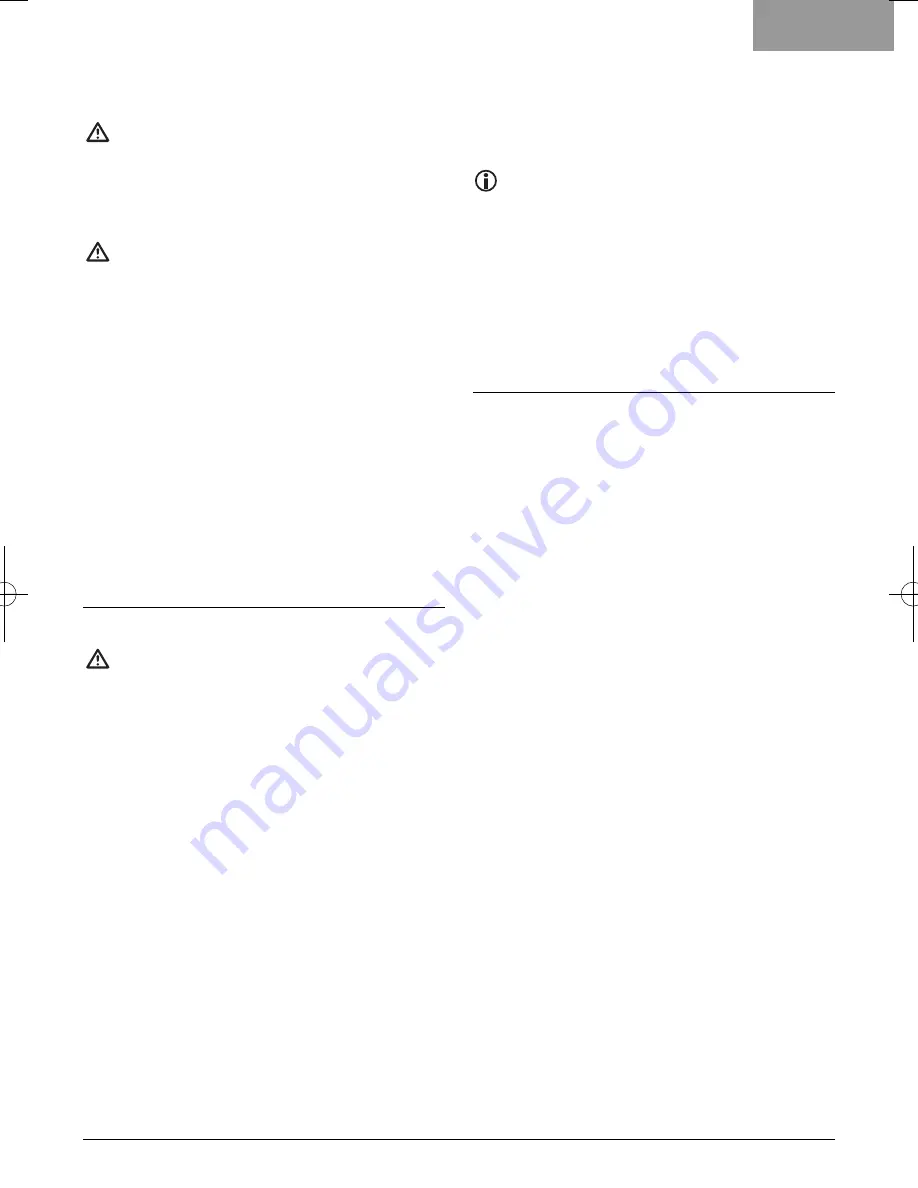
- 5 -
Connection to a voltage source
Attention!
Before connecting the power inverter to a vol-
tage source make sure that the on/off switch
e
on the device is in the position 0.
Attention!
Do not use the power inverter in vehicles who-
se plus pole is connected to the vehicle body
and/or the chassis.
The positive pole must be inside the 12 V recep-
tacle. Do not use the power inverter in vehicles
with positive earth 12 V receptacles. Otherwise
the device will be damaged.
• Insert the 12 V vehicle plug
w
into a 12 V
vehicle receptacle.
Connection and operation
of a load/device
Attention!
Before connecting a load/device to the power in-
verter make sure that the on/off switch
e
on
the device is in the position 0.
Make sure that the power of the load/device
to be run that you intend to connect to the po-
wer inverter does not exceed the continuous load
rating specified in the power inverter's technical
data.
• Insert the plug of the connecting load/the device
to be operated into the 220 - 240 V socket
r
of the power inverter. Do not switch on the load/
device to be operated yet!
• Switch the power inverter on by moving the on/off
switch
e
to the position I. If the power inverter is
functioning properly the operation LED/Overload
indicator
t
will light up green.
• Now switch on the load/device to be operated.
When switched on a short signal tone can be
heard.
Note:
If a signal tone can be heard and the opera-
tion LED/Overload indicator
t
lights up red the
input voltage is too low or the power of the
load/device connected to the power inverter is
too high.
Device operation information
General notes
Usually on the device's rating plate you can find
information regarding the power consumption in
amperes (A) or the wattage (W).
Before operation make sure that the maximum power
consumption does not exceed 0,65 A and the maxi-
mum continuous load is not more than 150 W.
• Loads with a high internal resistance operate
very well with the power inverter, on the other
hand, loads with a low internal resistance, for
example heating and cooking devices have a
power consumption in watts that is too high.
• Inductive loads, for example, televisions or stereo
systems (devices with an inductor or a transformer)
often require a much greater switch on current
than resistance loads with the same specified
wattage. When switching on, television sets demand
much more power than that indicated on the
rating plate.
Therefore it may be necessary to switch the power
inverter on and off several times in order to switch
the television set on.
• In the event of uncertainty, please consult the
manufacturer of the connected appliance.
GB
IB_93815_TSW150A1_GB_LB4.qxd 04.11.2013 9:45 Uhr Seite 5
Summary of Contents for TSW 150 A1
Page 3: ......
Page 13: ... 10 ...
Page 23: ... 20 ...
Page 33: ... 30 ...
Page 43: ... 40 ...
Page 53: ... 50 ...









































